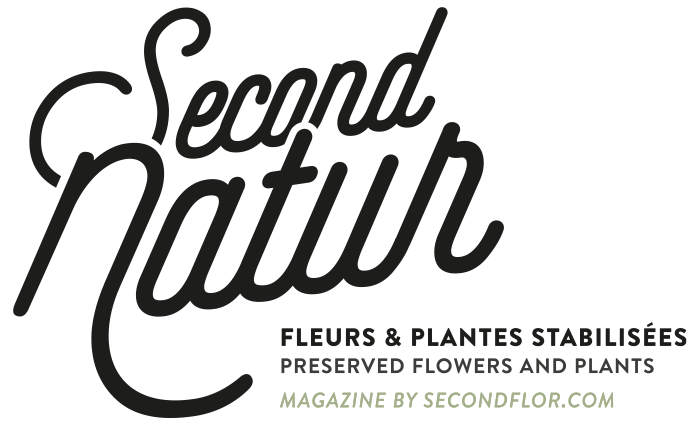Immersion preservation is a plant conservation technique, mainly based on a dried plant that we rehydrate in a bath. As a reminder, the capillarity stabilization is done from a fresh plant drinking a substitute sap.
What is the process used in immersion preservation?
To preserve a plant by immersion, it must first be harvested and dried. It is then soaked in a bath of water, vegetal glycerin and food colouring. Temperature is one of the most important criteria for the success of the process. The solution must therefore be heated to a minimum of 40 °C before soaking the plant in it. At this temperature, the glycerin molecules and pigments will be thinner and will be able to penetrate the plant. The result is a persistent colour and suppleness. Once the bath is finished, the plant is cleaned and dried.
This process allows glycerin, which by nature binds water molecules, to penetrate and maintain hydration inside the plant. In the case of capillary stabilization, the solution is “drunk” and is diffused through the inside of the plant. Conversely, during preservation by immersion, the solution penetrates the plant from the outside, since the latter is immersed in the solution. This is one of the main differences between the two techniques. But the preservation of a plant remains a “temporary” rehydration. Glycerin and water will slowly evaporate, causing slight degradation of the plant over time.
How are the colours given to the plants?
One of the phenomenon of immersion preservation is that the whole plant will take the same colour. It is not possible to make different shades between the leaves and stem, since both are immersed in the preservation solution. However, many shades are available for plants using this technique.
What are the benefits of immersion preservation?
Unlike plant stabilization, which must deal with the constraints of rising sap or harvesting, immersion preservation has no seasonality. The work is carried out on a dry raw material, which makes it possible to have plants preserved by immersion available in large quantities.
The fact that the plant is dried, as well as the method used, gives it 100% success. It is not possible to miss a preservation by immersion, unlike stabilization. There is an industrial risk in stabilization that does not exist with preservation.
These advantages make a preserved plant more attractive in terms of price. For example, amaranths can either be preserved or stabilized. But if they are preserved, they will be cheaper because, among other things, there are fewer risks in producing them. Depending on the project and the desired sustainability, preserved plants can be very interesting.
What are the varieties concerned by this technique?
Preserved products using this technique are mainly amaranth, broom, bright grass, hydrangeas, barba, mash reed and certain species of moss.
Immersion preservation is therefore a safe and beneficial way to preserve a plant. It can sometimes be combined with other techniques, such as capillary stabilization. But as for mixing techniques, we’ll explain it soon in a new article.
To find out more about preserved plants, browse through the What is it? section.

